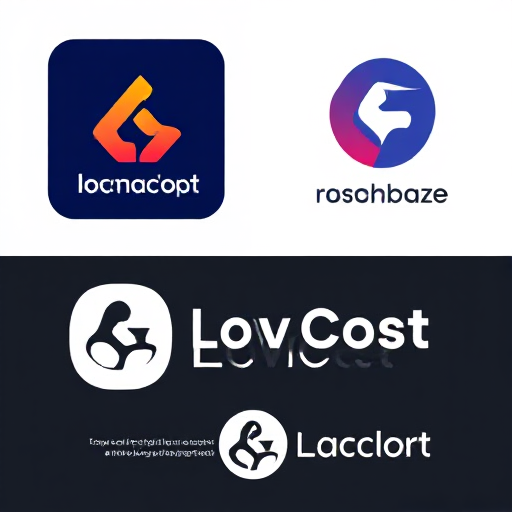Content Writing For Marketing
Content writing is a crucial component of marketing, serving as a bridge between brands and their target audiences. In today’s digital landscape, effective content can enhance brand visibility, engage customers, and drive conversions. This guide explores the essentials of content writing for marketing, including strategies, types of content, and best practices to ensure your marketing efforts are successful.
Find Out How To Make Money As A Full-Time Writer/Blogger Guide.
Understanding the Role of Content in Marketing
Content marketing involves creating valuable, relevant content to attract and engage a specific audience. Unlike traditional advertising, which often interrupts the consumer journey, content marketing aims to provide value that aligns with the needs and interests of the audience. This approach helps build trust, establish authority, and foster long-term customer relationships.
Key Elements of Effective Marketing Content
- Audience Understanding:
- Knowing your audience is crucial. Conduct market research to identify their demographics, preferences, pain points, and interests. Tailoring your content to meet these needs enhances its relevance and effectiveness.
- Clear Objectives:
- Define your content marketing goals. Are you looking to increase brand awareness, generate leads, or drive sales? Having clear objectives guides your content strategy and helps measure success.
- Brand Voice and Tone:
- Establish a consistent brand voice that reflects your company’s values and resonates with your target audience. Whether it’s professional, friendly, or quirky, maintaining a consistent tone across all content helps build brand recognition.
Types of Marketing Content
- Blog Posts:
- Blogging is a popular form of content marketing. Create informative and engaging articles that address your audience’s interests or pain points. Optimize blog posts for SEO to increase visibility on search engines.
- Social Media Content:
- Social media platforms are ideal for sharing content and engaging with your audience. Create shareable posts, graphics, and videos tailored to each platform to maximize reach and engagement.
- Email Newsletters:
- Email marketing remains a powerful tool for reaching customers. Craft informative newsletters that provide value, showcase new products, or promote special offers. Personalization can enhance engagement rates.
- Infographics:
- Infographics present complex information in an easily digestible format. Use them to share statistics, processes, or comparisons relevant to your audience. Visual content can significantly increase shareability.
- Videos:
- Video content is increasingly popular, especially on social media. Create engaging videos that inform, entertain, or demonstrate your products. Live streams and webinars are also effective ways to connect with your audience.
- Ebooks and Whitepapers:
- In-depth resources like ebooks and whitepapers establish authority and provide valuable information. Offer these as lead magnets to capture email addresses and nurture leads.
- Case Studies:
- Share case studies that highlight successful projects or satisfied customers. This type of content builds credibility and demonstrates the effectiveness of your products or services.
- Webinars and Podcasts:
- Host webinars or create podcasts to provide valuable insights and foster community engagement. These formats allow for deeper discussions and can establish your brand as an industry leader.
Writing Tips for Effective Marketing Content
- Engaging Headlines:
- Craft compelling headlines that grab attention and encourage clicks. Use numbers, questions, or promises of value to pique interest.
- Clear and Concise Language:
- Write in a clear and concise manner. Avoid jargon and overly complex language. Ensure your content is easily understandable to your target audience.
- Provide Value:
- Always focus on providing value to your audience. Address their needs and interests, and offer actionable insights or solutions.
- Include Calls-to-Action (CTAs):
- Encourage your audience to take specific actions, such as signing up for a newsletter, downloading a resource, or making a purchase. Use clear and compelling CTAs.
- SEO Optimization:
- Incorporate relevant keywords throughout your content to improve search engine visibility. Optimize titles, meta descriptions, and headings for SEO.
- Visual Elements:
- Use images, graphics, and videos to complement your written content. Visual elements enhance engagement and help convey your message more effectively.
- Storytelling:
- Utilize storytelling techniques to make your content relatable and engaging. Sharing personal experiences or customer stories can foster a deeper connection with your audience.
- Edit and Proofread:
- Ensure your content is free of grammatical errors and typos. Editing improves clarity and professionalism. Consider using tools like Grammarly or Hemingway for assistance.
Best Practices for Content Marketing
- Develop a Content Strategy:
- Create a comprehensive content strategy that outlines your goals, target audience, content types, and distribution channels. A well-defined strategy guides your efforts and enhances consistency.
- Leverage Analytics:
- Use analytics tools to track the performance of your content. Monitor metrics such as engagement rates, traffic sources, and conversion rates. This data helps refine your strategy and improve future campaigns.
- Repurpose Content:
- Maximize the value of your content by repurposing it across different formats. For example, turn a blog post into an infographic or a video. This approach increases reach and reinforces your messaging.
- Engage with Your Audience:
- Encourage interaction by responding to comments and messages. Engaging with your audience fosters a sense of community and can lead to increased loyalty.
- Stay Updated on Trends:
- Keep abreast of industry trends and emerging technologies. Adapting your content strategy to align with current trends can enhance relevance and effectiveness.
- Collaborate with Influencers:
- Partnering with influencers can expand your reach and credibility. Collaborate on content creation or promotions to tap into their audience and build trust.
- Experiment and Adapt:
- Don’t be afraid to experiment with different content formats and strategies. Test various approaches to see what resonates best with your audience, and adapt accordingly.
You Can Start A News Blog To Get Fast Grow
Building Your Brand Through Content Marketing
- Establish Thought Leadership:
- Consistently share valuable insights and engage in industry discussions to position yourself as a thought leader. Thought leadership enhances credibility and attracts followers.
- Showcase Customer Success:
- Highlight customer testimonials and success stories. Showcasing positive experiences can build trust and encourage potential customers to choose your brand.
- Create a Community:
- Foster a sense of community by engaging with your audience and encouraging discussions. Building a loyal community around your brand can lead to increased customer retention and referrals.
- Integrate with Other Marketing Efforts:
- Ensure your content marketing efforts align with your overall marketing strategy. Integrate content with social media, email marketing, and other channels to create a cohesive brand message.







